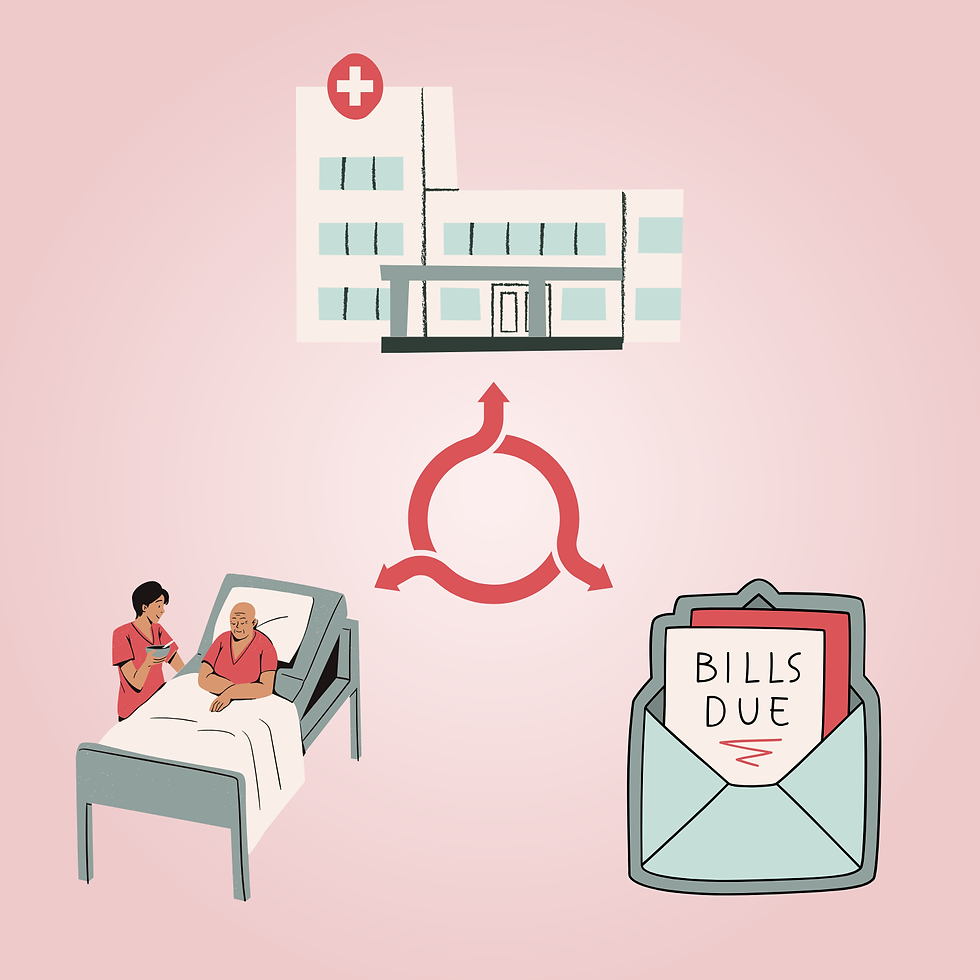Mitochondria and Maternal Health
- Abby Cortez
- Apr 10, 2023
- 4 min read
If you ask anyone what they know about biology, at least one of the things they say is probably going to be: “the mitochondria is the powerhouse of the cell.” But what does that actually mean? And what happens if the powerhouse shuts down?
The mitochondria is a type of organelle, a word which refers to things contained within human cells, and it produces the energy (in the form of ATP, Adenosine Triphosphate) needed for the body to function. The mitochondria is special because it has its own DNA separate from the DNA in the nucleus of the cell that makes up most of our genetics. This DNA is crucial for the function of the mitochondria and this the function of the body.

If mutations occur within the DNA of the mitochondria they can cause mitochondrial diseases that have drastic impacts on health causing things like blindness, cardiovascular issues, or neurological issues like seizures. These diseases are not only inheritable, but almost unavoidable because mitochondrial DNA is only passed down on the maternal side. Paternal mitochondrial DNA (mtDNA) is degraded in embryos leaving only the mother’s mtDNA for the child, thus if she has a mutation, her children will likely have it too.
Mitochondrial issues can not only impact fetal vitality but also maternal health throughout her pregnancy. Mitochondria regulate the metabolism and energy in the human body, a process complicated by supporting a fetus. Thus, it’s important for the organelle to work properly. Women with mitochondrial disorders tend to have increased risk of, among other things, gestational diabetes, hypertension, difficulty breathing, tachycardia, muscle weakness, anemia, and preterm delivery.
Concerning maternal health, there is not yet a way to eliminate these genetic diseases, instead support mechanisms are used to aid mother’s feeling the effects. Things such as vitamin supplements or nutrition help. In terms of the fetus, the options are more controversial.
There is the option for use of a donor egg, which would be free from inheritable mitochondrial disease, but this does not allow the mother to be genetically related to her child. In recent years, research has been done about mitochondrial replacement techniques (MRTs), which in essence remove the mitochondria from a mother’s egg, replace it with donor mtDNA, and allow the mother to be the main source of maternal genes for her baby. But of course, it isn’t that simple.
There are two main types of MRTs: Maternal Spindle Transfer (MST) and Pro-Nuclear Transfer (PNT). MST involves removing the nucleus of the donor egg and replacing it with the nucleus of the maternal egg, before fertilizing it with the sperm of the father. PNT instead has the father’s sperm fertilize both the donor and maternal egg, before switching the nucleus of one to the other. The use of MRTs in general is highly debated, as well as whether one technique is more or less permissible than another.
Supporters of the techniques argue that it is a great way to help the mother feel like her child is her own, because it still has genes that are shared by her. There are arguments suggesting that the use of an MRT has an element of selectiveness similar to the idea of genetically engineering a child, because parents are choosing an mtDNA donor. However, counter arguments suggest that particularly with the use of PNT, because the fertilization event has already occurred, the same child will be born regardless of if the mtDNA replacement occurs or not, thus the method is ethically permissible.
It is of course also important to consider that the use of an MRT could be considered destruction of an embryo, which also has complicated ethics. Some argue that the creation of a donor embryo simply to be destroyed makes the process unethical.
Then the child must be considered. This is a new technique and children born with the use of an MRT may be subject to routine doctor check ins throughout their lives they were unable to consent to. Further still, because mtDNA is passed on to children, MRTs could be considered altering the germline, or heritable, genes of the child, which can be dangerous if the effects of the change are not understood.
As this debate continues, so does research. The UK was one of the first countries to allow both MST and PNT for women whose cases have been approved with licensed clinicians, but there remain a vast majority of countries, the United States among them, that restrict the use of these techniques. Discussion should continue about the ethical considerations of MRTs so that we can work towards finding a way to aid mothers who suffer from mitochondrial diseases.
It’s crucial that options for treatment continue to be researched so a technique, whether it be MRTs or not, can become an option for mothers who need it. The option to have a child free of mutated mtDNA who was still genetically their own is a very important thing for a mother.
As genetic technology improves and new methods come about, it will be important to continue to evaluate and ensure that the research remains ethical and high quality. It may also be important to be aware of the socioeconomic disparity the popularization of these techniques may pose should they be expensive. In short, there remain many unanswered questions about these MRTs and about potential solutions to mitochondrial disease inheritance as well, but they can never be answered if we don't ask.
Edited by: Anne Sacks
Graphic Designed by: Shanzeh Sheikh
References



Comments